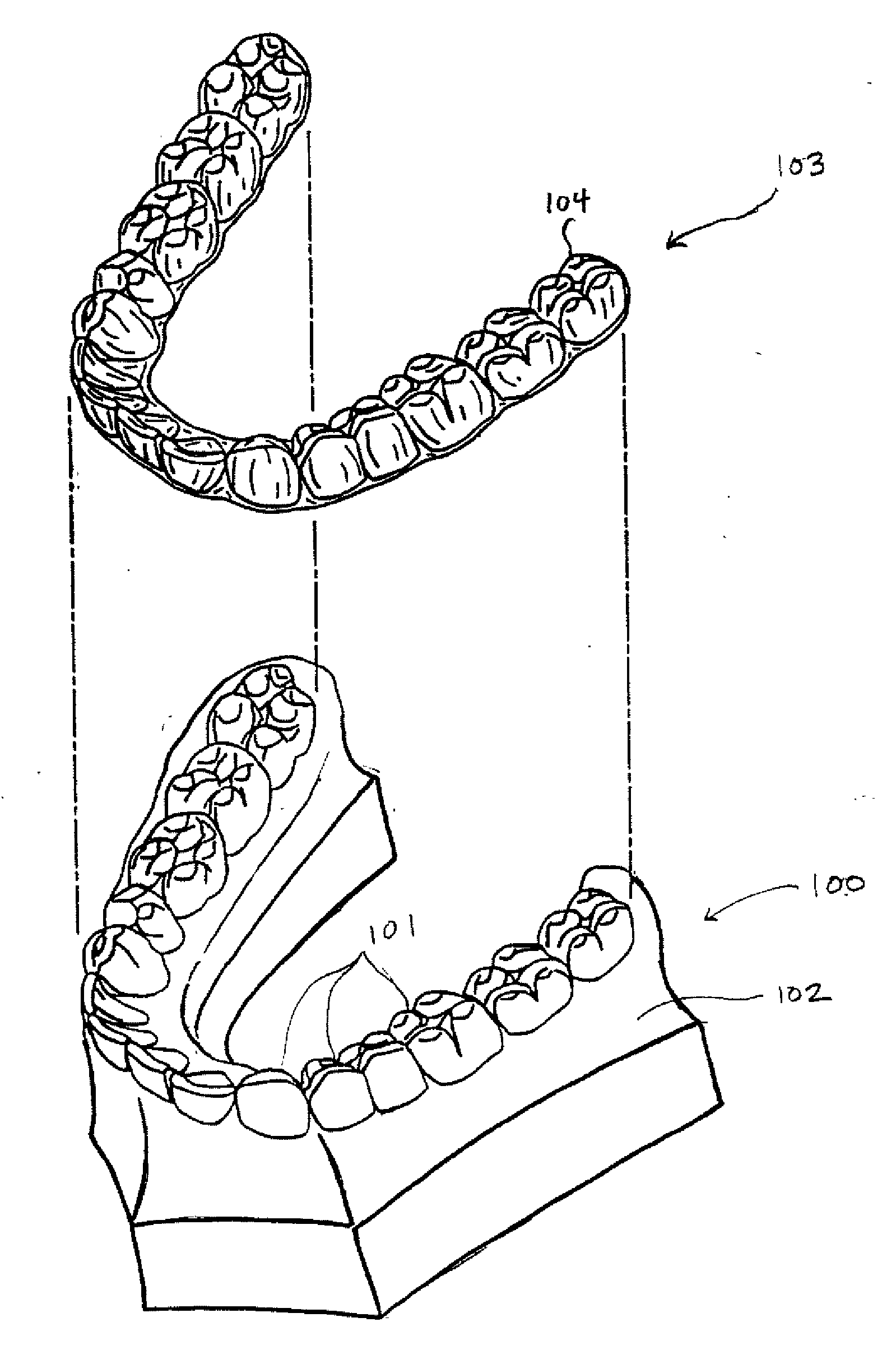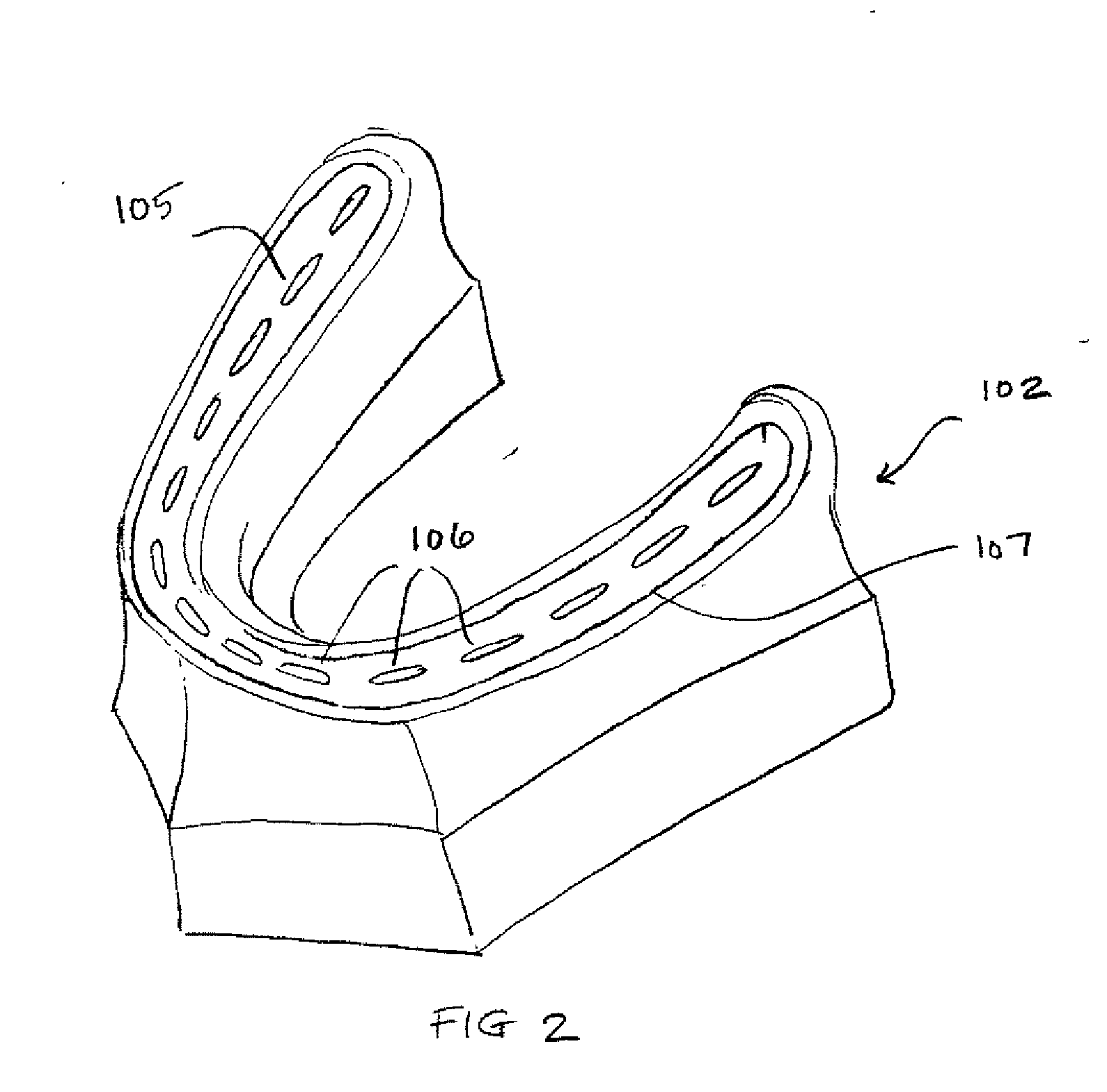Reconfigurable dental model system for fabrication of dental appliances
a dental appliance and model system technology, applied in the field of orthodontics, can solve the problems of affecting the treatment of patients, and affecting the treatment effect of patients, and achieving the effect of reducing the cost and time of treatmen
- Summary
- Abstract
- Description
- Claims
- Application Information
AI Technical Summary
Benefits of technology
Problems solved by technology
Method used
Image
Examples
Embodiment Construction
[0037]The present invention provides an apparatus and methods to produce and operate a manipulable dental model system to model a series of tooth and gingiva configurations for a single patient throughout orthodontic treatment. The tooth and gingiva configurations represent each stage of treatment from initial presentation, through intermediate stages and to the final desired configuration. The manipulable model system may be used for a variety of purposes, particularly for the production of polymeric and other elastic positioning appliances.
[0038]In one embodiment of the present invention, a single dental model system is manipulated and reconfigured to model different tooth configurations by controlling the movement of at least some of the individual tooth members, or groups of members, with manipulation mechanisms. Referring to FIG. 1, a simplified illustration of such a manipulable dental mold 100 for the fabrication of dental appliances is shown. In this illustration, the mold 1...
PUM
 Login to View More
Login to View More Abstract
Description
Claims
Application Information
 Login to View More
Login to View More - R&D
- Intellectual Property
- Life Sciences
- Materials
- Tech Scout
- Unparalleled Data Quality
- Higher Quality Content
- 60% Fewer Hallucinations
Browse by: Latest US Patents, China's latest patents, Technical Efficacy Thesaurus, Application Domain, Technology Topic, Popular Technical Reports.
© 2025 PatSnap. All rights reserved.Legal|Privacy policy|Modern Slavery Act Transparency Statement|Sitemap|About US| Contact US: help@patsnap.com



